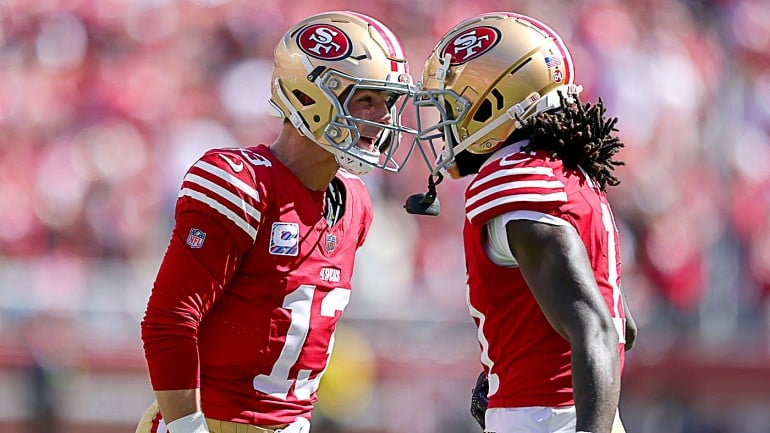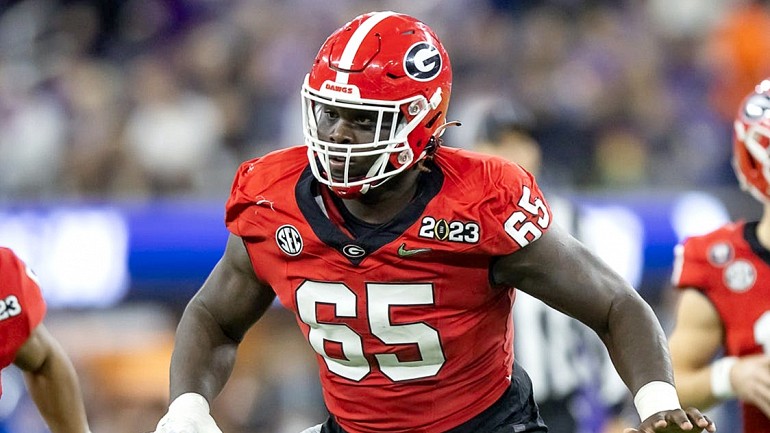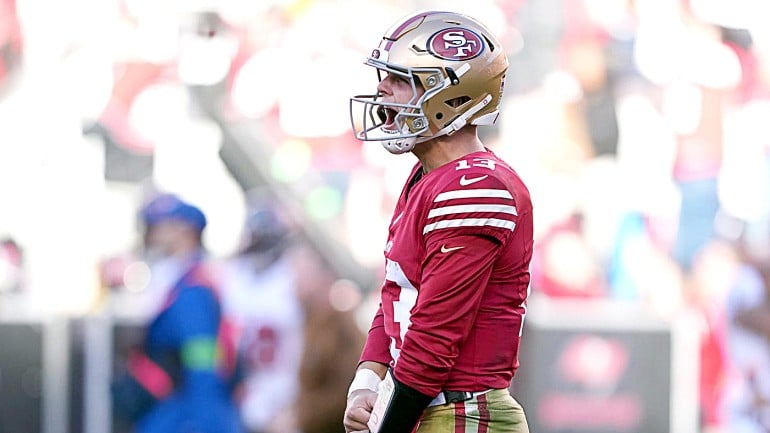The move to bump up LB Shayne Skov, what have you seen from him and how can he fit in and help you guys?
"Shayne was actually a difficult cut at the cut to 53, because I thought he did enough to make the team. Obviously, we felt like we had six inside linebackers that were NFL quality players. So, that was a difficult day for Shayne and for us. But, I told him, we looked at it if we could clear waivers we'd get an opportunity to put him on the practice squad and really look at it as you are our sixth inside linebacker and if we ever had to make a move we would bring him up immediately. So, I think we were fortunate because of our depth there. We are obviously going to miss [LB] Ray-Ray [Armstrong]. Feel bad for him in terms of having to go on IR and going to be out for the year because I thought he was playing well for us. But, I think we feel confident in being able to bump Shayne up and with [LB Gerald] Hodges and with [LB Michael] Wilhoite and with [LB Nick] Bellore, that we still have some depth at the inside linebacker position."
Chip Kelly Discusses Matchup vs. Seahawks Defense
Does he cross-train at both spots, Shayne?
"Yeah, they all have to. If you're not, [LB NaVorro Bowman] Bo doesn't cross-train, but all of the other four do. Just depending on what were to happen. Bo is the MIKE, but the other guys, Gerald can do both, Bellore does both, Wilhoite does both and Shayne will do both."
"Mike is good. Mike would be the next guy up in that situation. Those guys had a really good battle in camp between the two of those guys in who really was going to be that coverage linebacker for us and real confident in Mike in being able to do that."
Is S Jaquiski Tartt a guy that can do that too?
"Yeah, he's got a lot of different roles in terms of safety and what we're doing with him in some of our other packages. So, that's not a maneuver that we'd be making right now in terms of moving him to linebacker."
I think in 2010 when you were at Oregon, you took a trip down to Santa Clara and maybe a couple other places. What was the point of doing that and what did you learn on those visits?
Were you looking at how they organized their practice, the pace at which they ran it?
"I was looking at everything. There wasn't one specific thing. I think, if I go watch a high school practice when I was a college coach, I may be able to pick up something from that, take down a note of, 'Hey, how this guy taught someone how to pull on a trap block, that's a good way to do it or that's a good way to present it.' So, I think when you're going, I wasn't going to get, 'Hey, I'm looking for this thing specific.' I think you just go in with wide eyes and I'm a lifelong learner. You can get anything out of it and I don't think you just go and look at, 'I want this one specific thing and I'm not going to pay attention to anything else.' So, I spent all my time trying to take as much information as I could in on all three of those visits and I was fortunate because of, whether it was Jim or Pete or [United States Air Force Academy head coach] Troy Calhoun at Air Force, that they allowed me to do it. Not a lot of people would allow people to come in, especially in-season, but it was good experience for me."
As a coach, quarterback accuracy seems like an innate trait. But, as a coach, how do you coach accuracy from your quarterback?
"I don't think it's an innate trait. I think it's something that they really need to work on. It's a byproduct of a lot of different things; protection, being on the same page as the receivers, the mechanics about you, how you throw the ball, how are your feet set. There's a lot to it. I don't think it's as easy as some people think it is. It's the most difficult position to play because you're trying to execute something while someone is trying to take your head off. It's not as easy I think as people think, but I think it's a huge part of being a very, very good quarterback are the ones with repetitive accuracy is what you talk about on a consistent basis. Not only just getting it to the receiver, but getting it to the receiver in a position where he can go make a play on the ball."
"Again, I think it's not always the quarterback. And I try to say that not to take pressure off of Blaine, but just because that's the case. We had one in the preseason game and he's like, 'Well, it was a bad pass to the running back.' Well, the running back is supposed to run a flat route and the running back didn't run a flat route. So, the quarterback looks like he's very inaccurate on the throw, but it's not the quarterback's fault. He's expecting the running back to go up three yards, plant and drive to the sideline at five yards and deliver the ball on time there. When the running back runs the wrong route everybody looks at it and says, 'What a bad throw by the quarterback.' Well, sometimes it's not the quarterback's fault. It's a combination of everything. Or the quarterback gets put off his launch point because we missed something in protection. We had a play the other night when we had everything blocked up well, but the three-technique just beat our guard and was in the quarterback's face before he had an opportunity to throw the ball. Now, that's not the quarterback's fault, but that's what he has to deal with. There's a lot that's involved in all of that and I think being good in the passing game on the offensive side of the ball takes all 11 guys. It doesn't just take a quarterback that's an accurate guy because if you can't protect him he's not going to be very active. Or, if your receivers and the quarterback aren't on the same page, you're not going to be very accurate."
What are the basics that you haven't been doing? Offensive coordinator Curtis Modkins said the offense needs to get back to the basics.
"You should ask Curtis what he meant by that because I don't follow that one."
Do you disagree with his statement that the offense needs to get back to basics?
The offense wasn't running at the usual, very quick pace that you do at times in the Carolina game and I know you can switch that up at will, but why, it seems to be an advantage. Why slow down?
"I guess, again, that's a misconception we talk about all the time. We don't try to operate at a very quick pace and don't try to run more plays than other people run. Just trying to take advantage of what the defense is. Sometimes when you're playing against a multiple defense, you want to make sure you're in the right play and we can have checks that are done at the line of scrimmage. So, again, it goes back to, we talked about a long time the misconception that we want to play fast. It's just one of our tools in our toolbox that if it helps you because you know the look you're going to get and you can get them before they can lineup, it's beneficial to you. But, if you play fast and say, they have six guys on the right side and you run a ball to the right side and you lose four yards on the play, then playing fast isn't a real good thing to do. So, I think sometimes when you're playing multiple defenses, you want to be in the right look, you want to make a check at the line of scrimmage. So, it's all part of what we do. It's just one phase. We can play fast if the situation dictates that we play fast. But, there was a lot of checking that went on in the Carolina game. So, if we're checking in the Carolina game to make sure we're getting in and out of the right plays, then obviously when you're going to check then you're not going to play fast."
They're still not able to substitute guys in during that--?
"Yeah, everybody, I don't think the substitution, there's never been an issue with teams not being able to substitute because when you change personnel, they can change personnel. So, if we put 11 personnel in the game, they're matched up with 11 personnel. So, if we want to go fast and put two tight ends in the game, well then the officials are going to stand over the ball and let them match. So, I don't think matching up or playing fast so they can't substitute, that rule changed a while ago and the offense doesn't have an advantage where in the past, what you could do is you could run a guy on before they could run a guy on and then they let you snap the ball. Now if you watch the mechanics of it, the referee stands over the ball and actually looks at the sideline and says, 'Are you going to sub and if you're going to match then we're going to let that guy come on the field.' So, that aspect of it, it's at least four or five year now that rule has changed so that it's not an advantage in terms of trying to play fast and catch them with the wrong grouping on the field."
"I think the Seahawks secondary is probably the best in the league right now. You know, you've got three perennial Pro Bowl players in [Seattle Seahawks SS Kam] Chancellor, [Seattle Seahawks FS Earl] Thomas and [Seattle Seahawks CB] Richard Sherman. You know, the one thing about the Seahawks is the Seahawks do what the Seahawks do. You know, they try to dictate to you offensively on how you're going to play based upon how they play. They've got a great scheme that those guys have been in for a long time. They are very comfortable in that scheme. They've played together for a long time and [Seattle Seahawks CB] Jeremy Lane, the other corner, is a very good player too who bumps inside to nickel when they get into a nickel package. So, his ability to be such a versatile player, he's really good too. But, Richard's usually going to end up as the left corner on defense or the right corner as we face him. Earl's usually the high safety. Kam's the guy that comes down in the box and they do what they do. Occasionally they'll match, but you don't know if they're going to match. But, a lot of times they don't match but then they can play different coverages because sometimes when people match, you know, you put Torrey on the other side, if 25 goes over, you know what the coverage is. Well, they'll leave Richard over there and cover a tight end and they'll still play man behind it. So, I think some of their versatility from their secondary allows them to disguise things even better from a coverage standpoint."
Their defensive front has also been together for a long time. So, with that defensive front, what's unique about that that allows the secondary to be as effective--?
"Well, the whole group, they're number one in the league right now in defense I think in total yardage and points. There's a reason for it. You know, you've got [Seattle Seahawks DE Michael] Bennett and [Seattle Seahawks DE Cliff] Avril in that group in the front. You've got two of the best inside linebackers in [Seattle Seahawks LB K.J.] Wright and [Seattle Seahawks LB Bobby] Wagner inside and then the secondary as I spoke about. So, they've got playmakers at every level and that's where the whole group as a whole has been together a lot. They've got great experience in Pete's system and then they play it as such. So, there's not a lot of inexperience when you're going against this group this week."
But, how's that defensive front, what's unique about that front seven and the pressure--?
At what point in your coaching career did you start implementing non-verbal play calls and was that done to help playing in loud road environments?
"Non-verbal play calls--."
Hand signals and--?
"That's just a, I think since we started coaching that's how, you either signaled the play into the quarterback and then he called it in the huddle or if you lined up in no huddle, you signal it into everybody. So, say, 25 years ago."
"Yeah, we have looked at it, but I don't know how relevant it is. It's obviously different personnel here, different scheme here in terms of who we are. There's a lot of the same faces there which is one of the reasons they're such a good defense. But, we look at everything. So, we've probably got 10 or 15 games that we looked at in terms of preparing for Seattle. But, I don't know how relevant that matchup was in terms of what we're going to do on Sunday."
* Transcript provided by the San Francisco 49ers



